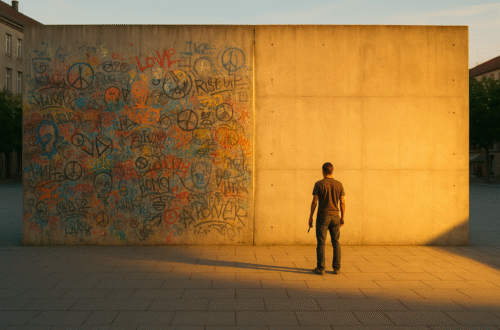Freedom, like fire, is both necessity and danger. We cannot live without it, and yet its flames must be handled with care. When applied to art, this paradox becomes especially vivid. For art, by its very nature, refuses to be entirely tame. It disturbs the settled dust of convention, often sparking exhilaration in some and indignation in others. One person’s revelation is another person’s provocation.
The question, then, is not whether art should offend, it most assuredly will, but what role offense plays in a society that values liberty. Do we regard offense as a sign of harm, an injury to be avoided at all costs? Or do we accept it as the inevitable friction of a pluralistic world, the sound of freedom doing its necessary work?
To answer requires us to look carefully at the nature of offense itself. Offense is, after all, not an external object but an internal reaction. It arises when something unsettles our convictions, challenges our assumptions, or confronts us with realities we would rather avoid. To be offended is to be momentarily thrown off balance. Yet is this imbalance always destructive? Or might it sometimes be the very precondition of growth?
John Stuart Mill argued, with characteristic clarity, that silencing a dissenting voice, whether expressed in prose or paint, is to rob humanity of the possibility of correction. Even a false or misguided expression can serve as the abrasive stone against which truth sharpens itself. Hannah Arendt, too, reminded us that pluralism is not optional; it is the very condition of political life. To expect art to speak in only one tone, one register, one acceptable vocabulary, is to deny the world as it is: fractured, diverse, endlessly contested.
Still, we must tread carefully. To argue that offense has value is not to suggest that all provocations are virtuous. Some wounds are not merely discomforting but genuinely harmful. The line between challenge and cruelty, between critique and degradation, is not always clear. Herein lies the delicate task of discernment: to ask not only whether an artwork provokes but also what it provokes us toward. Does it deepen our humanity or diminish it? Does it expand our moral imagination, or does it shrink the circle of belonging?
Societies have wrestled with this balance for centuries. The boundaries shift, evolve, and at times snap altogether. Today’s scandalous mural may be tomorrow’s cherished landmark. Yesterday’s “obscenity” may, in retrospect, be seen as a necessary truth-telling. Boundaries, then, must exist, but they cannot be static. They must be negotiated and re-negotiated in the ever-changing theatre of public life.
Perhaps, in the end, freedom of expression is best understood not as an absolute right but as a shared discipline. It demands of the artist a measure of responsibility, and of the audience a measure of patience. It requires courage on both sides: the courage to create boldly, and the courage to encounter what has been created without rushing to silence it.
To live within such a discipline is not easy. It demands that we endure discomfort, resist the temptation to legislate away every unease, and cultivate the moral imagination to distinguish between what wounds and what awakens. Yet without this discipline, freedom collapses into chaos on one hand or censorship on the other. The tension of boundaries—ever shifting, ever fragile—may in fact be the very sign that freedom is alive.
So the next time we find ourselves unsettled, indignant, or even offended by an artwork, we might pause before demanding its removal. For the very act of being provoked might be a signal not of our fragility but of our capacity to grow. To live freely is to learn the art of holding tension—without extinguishing either the fire of liberty or the dignity of our common life.





